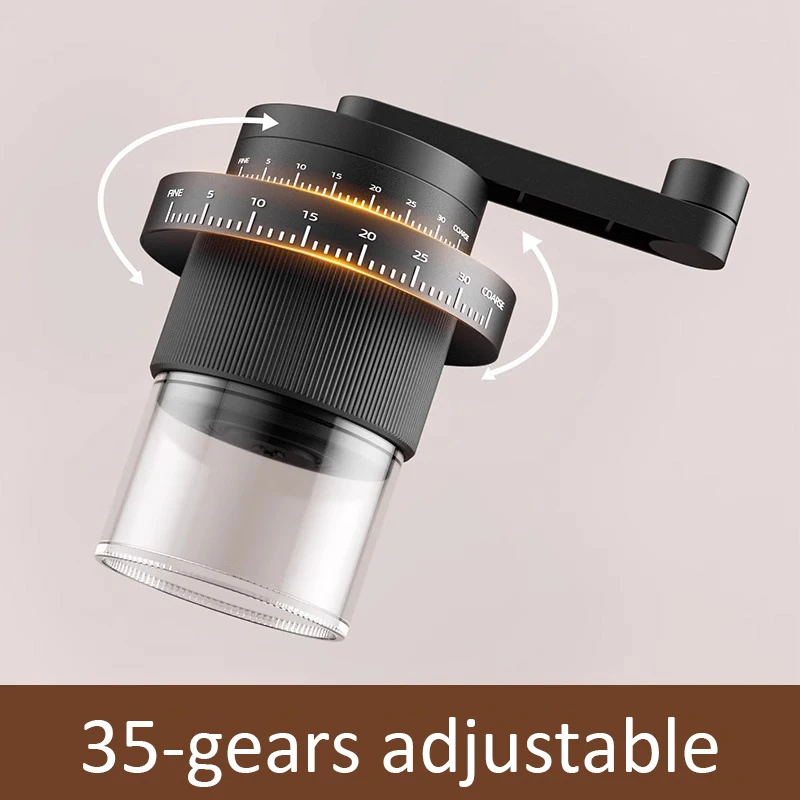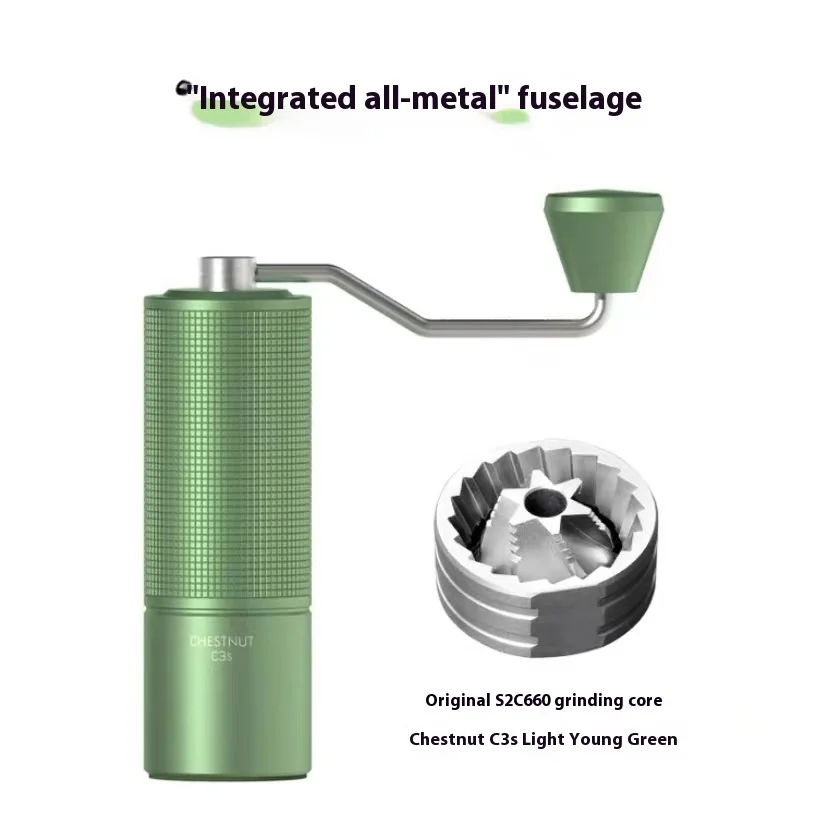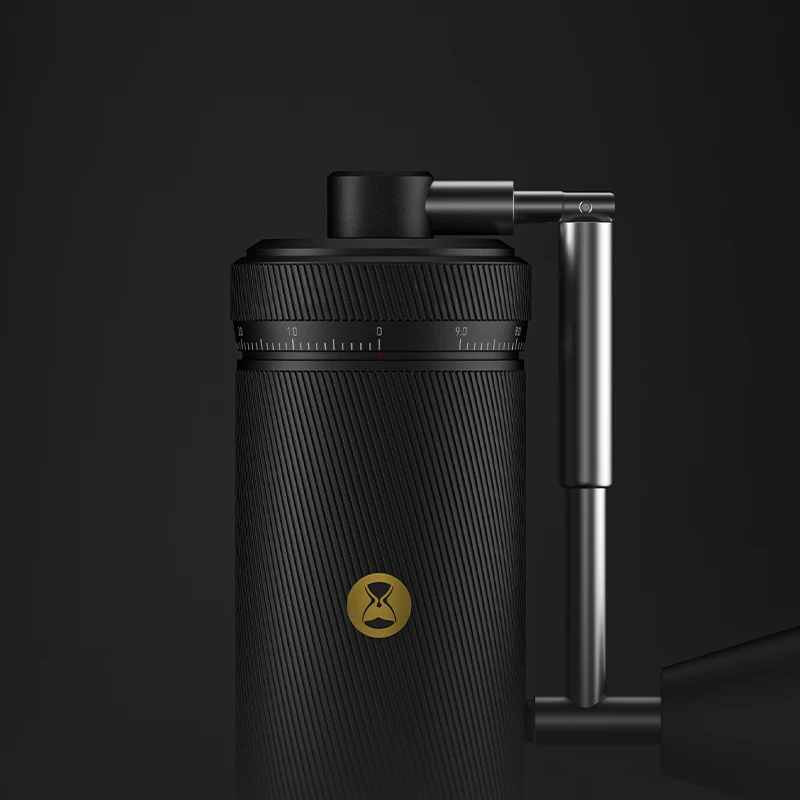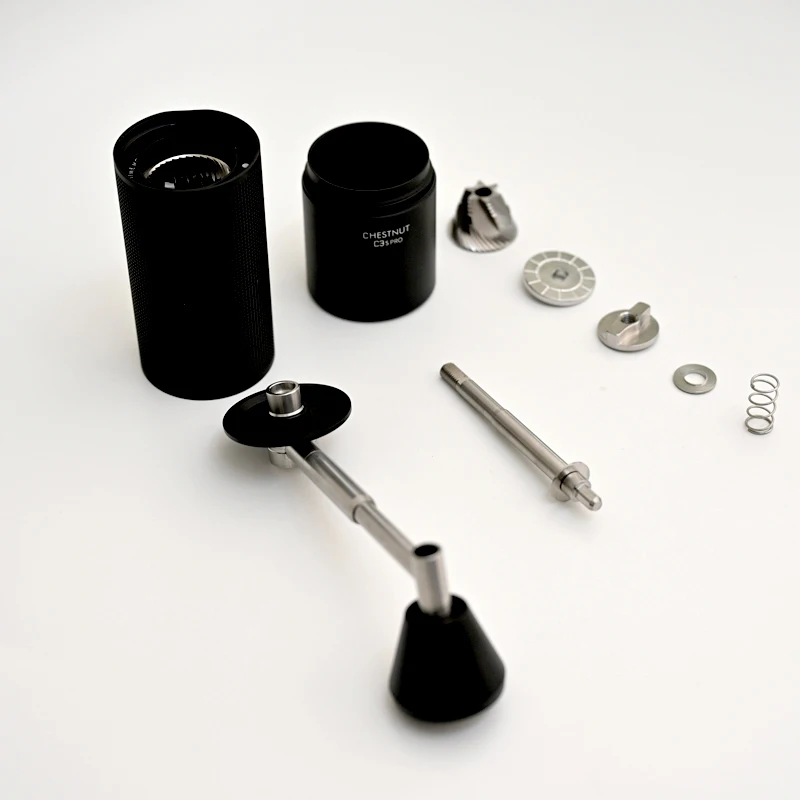Why a Specialized Cleaning Brush is Essential for Your Manual Coffee Grinder
A dedicated coffee grinder cleaning brush isn’t just another tool—it’s an essential companion for anyone serious about their coffee experience. Unlike ordinary cleaning brushes, these specialized tools are designed with specific bristle arrangements, sizes, and materials that address the unique challenges of coffee grinder maintenance.
Coffee oils and residue build up quickly in your grinder with each use. Even small amounts of these residues can significantly impact your brew’s flavor profile. These oils become rancid after just 1-2 weeks, introducing unwanted bitter notes to your otherwise perfect cup. More importantly, this buildup affects the consistency of your grind, which directly influences extraction quality.
Regular cleaning with a proper brush offers several crucial benefits:
- Preserves the accuracy of your mastering espresso precision grind settings by preventing residue buildup
- Extends burr lifespan by preventing premature wear from coffee particle buildup
- Prevents flavor contamination between different coffee varieties
- Maintains mechanical integrity by keeping adjustment mechanisms free of debris
- Eliminates potential breeding grounds for bacteria and mold growth
The cost of replacing worn burrs (approximately $30-60) far exceeds the investment in a quality cleaning brush and regular manual burr grinder maintenance. A few minutes of cleaning after every few uses can save both money and ensure your coffee consistently tastes its best.
Essential Features to Look for in a Manual Grinder Cleaning Brush
Bristle Material Selection
The type of bristles in your cleaning brush significantly impacts its effectiveness and longevity:
- Natural bristles (boar, horsehair): These excel at picking up fine coffee particles due to their natural texture and slight electrical charge. They’re gentler on precision burrs but may require more careful maintenance.
- Synthetic bristles (nylon, polyester): These offer excellent durability and are typically easier to clean. They’re ideal for removing stubborn coffee oils but can be too stiff for delicate grinder components.
- Hybrid designs: Some premium brushes combine both types for versatility.
The ideal stiffness varies depending on the grinder component—firmer bristles for caked-on residue, softer ones for delicate adjustment mechanisms.
Handle Design Considerations
An effective grinder brush must be comfortable to hold while providing precise control:
- Ergonomic handles with non-slip materials prevent accidents during cleaning
- Length matters—look for brushes between 5-7 inches (12-18 cm) that can reach deep into grinding chambers
- Some premium options feature dual-ended designs with different bristle configurations
- Wood handles provide better grip when dealing with static-clingy coffee grounds
Shape and Size Specifications
The brush shape determines which grinder areas you can effectively clean:
- Thin, angled brushes can access the narrow spaces between burrs
- Wider brush faces efficiently clean larger surfaces like hoppers and grounds bins
- Some specialized designs include conical shapes specifically for conical burr sets
Anti-static properties become particularly important when dealing with fine coffee grounds that tend to cling to everything. Brushes with anti-static bristles or treatments make the cleaning process significantly more efficient by preventing grounds from simply relocating rather than being removed.
When selecting a cleaning brush, consider your specific grinder model and the essential equipment for coffee grinder cleaning that complements your maintenance routine.
Top 5 Manual Grinder Cleaning Brushes for Premium Results
1. The Classic Wooden Handle Espresso Brush
This timeless design features a comfortable wooden handle with dense, medium-stiff natural bristles arranged in a flat pattern.
Key Features:
* 100% natural boar bristles with excellent particle pickup
* Ergonomic hardwood handle that resists staining
* 6-inch (15 cm) total length for good reach
* Dense bristle arrangement tackles both fine grounds and oils
Pros:
* Exceptional for cleaning burrs without causing damage
* Natural bristles generate minimal static electricity
* Comfortable grip reduces hand fatigue during thorough cleaning
* Durable construction typically lasts 2-3 years with proper care
Cons:
* Requires more maintenance than synthetic alternatives
* Natural bristles may shed slightly in early use
* Not machine washable
Best For: Precision burr cleaning and general maintenance on most manual grinder types.
2. The Dual-End Precision Grinder Brush
This versatile option features different bristle configurations on each end for comprehensive cleaning.
Key Features:
* Synthetic bristle end for tough buildup
* Natural bristle end for delicate components
* Slender profile for accessing tight spaces
* Ergonomic center grip with non-slip texture
* 7-inch (18 cm) total length
Pros:
* Versatile cleaning options without switching tools
* Reaches deeply into grinder chambers
* Excellent for targeting different components with appropriate bristle types
* Anti-static treatment reduces coffee ground cling
Cons:
* Slightly higher price point
* More complex to maintain with dual bristle types
* Larger storage footprint
Best For: Coffee enthusiasts with multiple grinder types or those who want maximum versatility.
3. The Compact Travel Grinder Brush
Designed specifically for portable grinders, this compact brush delivers effective cleaning in a travel-friendly package.
Key Features:
* Short handle (4 inches/10 cm) with foldable design
* Dense, medium-stiff synthetic bristles
* Angled brush head for reaching around burrs
* Protective cover prevents bristle damage during transport
Pros:
* Perfect companion for travel grinders
* Easily fits in coffee travel kits
* Angled design reaches difficult areas in compact grinders
* Protective cover keeps bristles clean between uses
Cons:
* Less comfortable for extended cleaning sessions
* Limited surface area coverage
* Not ideal for larger home grinders
Best For: Travelers and outdoor enthusiasts using portable manual grinders.
4. The Professional Barista’s Cleaning Brush Set
This comprehensive set includes multiple brush configurations for complete grinder maintenance.
Key Features:
* Three specialized brushes with different sizes and bristle arrangements
* Includes a precision detail brush for adjustment mechanisms
* Natural and synthetic bristle options
* Premium storage case
* Each brush 5-7 inches (13-18 cm) in length
Pros:
* Complete solution for all grinder components
* Detail brush reaches the smallest crevices
* Professional-grade quality and durability
* Organized storage prevents brush damage
Cons:
* Higher investment than single brushes
* May offer more tools than casual users need
* Requires more storage space
Best For: Coffee perfectionists who maintain multiple high-end manual espresso grinders and demand thorough cleaning.

5. The Anti-Static Precision Brush
Specifically designed to combat the frustrating static cling that makes fine grounds difficult to clean.
Key Features:
* Specialized anti-static synthetic bristles
* Copper-infused handle reduces static buildup
* Precision-cut bristle pattern
* 5.5-inch (14 cm) length optimized for control
* Stiffness calibrated for both cleaning power and component safety
Pros:
* Dramatically reduces static cling of fine grounds
* Excellent for environments with low humidity
* Durable construction withstands frequent cleaning
* Easy to rinse clean between uses
Cons:
* Higher price point than basic brushes
* Specialized design less versatile for other cleaning tasks
* Requires occasional reapplication of anti-static treatment
Best For: Fine espresso grinding where static electricity is a significant cleaning challenge.
Fine Adjustment Hand Grinder, Precision Manual Grinder, Travel Coffee Grinder
Price range: $185.11 through $494.63 Select options This product has multiple variants. The options may be chosen on the product pageHand Burr Grinder, Hand Crank Coffee Grinder, Manual Espresso Grinder, Portable Coffee Grinder
Price range: $262.72 through $300.22 Select options This product has multiple variants. The options may be chosen on the product pageManual Burr Mill, Manual Coffee Grinder Stainless Steel, Manual Coffee Mill Grinder, Mechanical Coffee Grinder
Price range: $127.26 through $130.32 Select options This product has multiple variants. The options may be chosen on the product pageHand Burr Grinder, Manual Coffee Grinder Stainless Steel, Precision Manual Grinder
Price range: $183.64 through $187.52 Select options This product has multiple variants. The options may be chosen on the product page
Expert Technique: How to Properly Clean Your Manual Coffee Grinder
Follow these steps for a thorough cleaning that preserves your grinder’s performance:
Preparation: Disassemble your grinder according to the manufacturer’s instructions. Place components on a clean towel in the order removed to simplify reassembly.
Initial debris removal: Hold your grinder upside down and gently tap to dislodge loose grounds before using your brush.
Burr cleaning: Use light to medium pressure with your brush on the burrs, moving in the direction of the cutting edges, not against them. This prevents damage while effectively removing particles.
Hopper cleaning: Brush the interior surfaces with broad strokes, paying attention to corners where oils accumulate.
Grounds chamber cleaning: Use a combination of brushing and gentle tapping to remove compacted grounds, particularly in threaded areas.
Hard-to-reach areas: For tight spaces, use the tip of your brush at an angle, using a gentle twisting motion to dislodge particles.
Static management: If grounds cling due to static, lightly dampen (not wet) your brush’s bristle tips to neutralize the charge.
Reassembly: Before putting your grinder back together, ensure all parts are completely dry.
For optimal results, clean your manual grinder after every 1-2 pounds (0.5-1 kg) of coffee or every 1-2 weeks of regular use. Adjusting your espresso grind settings for the perfect shot will be much more effective with a thoroughly cleaned grinder, as residue can interfere with precise adjustments.
Complementary Tools to Pair with Your Cleaning Brush
While a quality brush is essential, certain complementary tools can enhance your cleaning routine:
Air Blowers
* Perfect for dislodging fine particles from deep crevices
* Non-contact cleaning prevents burr damage
* Particularly useful for cleaning adjustment mechanisms
* Cost-effective options available in photography supplies ($10-15/€9-14)
Grinder Cleaning Tablets/Pellets
* Absorb oils and remove flavor residue that brushes can’t reach
* Used monthly to supplement regular brush cleaning
* Caution: use products specifically designed for coffee grinders
* Removes stubborn oils that affect flavor clarity
Microfiber Cloths
* Ideal for exterior cleaning and final polish
* Remove fingerprints and coffee dust from outer surfaces
* Can be lightly dampened for tackling stubborn spots
* Machine washable for easy maintenance
Precision Tools
* Thin wooden toothpicks work well for clogged holes and channels
* Small artist brushes reach extremely tight spaces
* Interdental brushes clean threads and small openings effectively
These tools work synergistically with your main cleaning brush. For instance, start with an air blower to remove loose particles, follow with your main brush for thorough cleaning, address persistent residue with precision tools, and finish with a microfiber wipe-down.
When selecting complementary tools for your manual coffee burr grinders, prioritize those that won’t scratch or damage sensitive components.

Proper Maintenance and Care of Your Cleaning Brush
To ensure your cleaning brush remains effective and hygienic:
After each use: Tap the brush against the edge of a trash can to remove loose grounds, then gently blow on the bristles to dislodge remaining particles.
Weekly cleaning: For natural bristle brushes, wash with mild soap and lukewarm water, gently working the soap through the bristles without harsh scrubbing. For synthetic brushes, a more thorough washing is acceptable.
Drying technique: After washing, gently reshape the bristles and hang the brush bristle-side down or lay flat with bristles extending over an edge to ensure complete drying.
Storage position: Store brushes horizontally or hanging with bristles pointing down, never resting on the bristles as this causes permanent deformation.
Bristle restoration: If bristles become misshapen, dip them in warm (not hot) water for 30 seconds, reshape, and allow to dry completely.
Signs that indicate it’s time to replace your brush include:
* Significant bristle loss
* Permanent bristle deformation
* Inability to clean effectively
* Visible mold or persistent odor
With proper care, quality natural bristle brushes typically last 1-3 years, while synthetic options may last even longer. Regular maintenance of your brush directly impacts how effectively you can clean the manual grinder parts that need regular cleaning.
Common Questions About Manual Grinder Cleaning Brushes
Can I use a regular paintbrush to clean my coffee grinder?
While possible in a pinch, paintbrushes aren’t ideal. They typically have bristles that are either too stiff (potentially damaging burrs) or too soft (ineffective for removing coffee residue). Additionally, they lack the precise shape needed to reach small spaces in coffee grinders and may contain manufacturing chemicals unsuitable for food contact.
How do brushes compare to compressed air for cleaning?
Both serve different purposes. Brushes provide physical contact necessary to dislodge oils and stuck particles, while compressed air excels at removing loose grounds from inaccessible areas. For optimal results, use both: air first to remove loose particles, followed by brush cleaning for thorough maintenance.
Are natural bristle brushes worth the extra cost?
For most coffee enthusiasts, yes. Natural bristles generally create less static electricity (reducing grounds scatter), conform better to irregular surfaces found in grinders, and are gentler on precision burr edges. The additional cost is typically justified by more effective cleaning and reduced risk of damage to expensive grinder components.
Can I use water with my cleaning brush?
Generally, it’s best to dry brush your grinder components. However, for stubborn residue, you can slightly dampen (not soak) your brush bristles. If you do use moisture, ensure all grinder parts dry completely before reassembly to prevent rust or mold growth, especially important when maintaining correct grind settings for espresso.
Should I have different brushes for different parts of my grinder?
While not absolutely necessary, having 2-3 specialized brushes can improve cleaning efficiency: a softer brush for delicate components, a firmer brush for stubborn residue, and potentially a precision detail brush for adjustment mechanisms and threads.
Advanced Cleaning Tips for Different Grinder Types
Ceramic Burr Grinders
Ceramic burrs require gentler cleaning techniques than their steel counterparts. Use softer bristled brushes and avoid applying excessive pressure that could chip the ceramic edges. Focus on brushing parallel to the cutting edges rather than across them. The micro-porous nature of ceramic surfaces can trap more oils, so more frequent cleaning is beneficial.
Steel Burr Grinders
Steel burrs can handle slightly firmer bristles for effective cleaning. Pay special attention to the cutting edges where coffee can compact. For steel burrs with specialized coatings, use medium-soft bristles to avoid scratching the surface treatments that improve grind consistency and burr longevity.
Stepless Adjustment Mechanisms
The precision components in stepless grinders require extra care during cleaning. Use a detail brush to clean the adjustment threads without disrupting your settings. Marking your preferred settings before cleaning helps maintain calibration. The fine threads in these mechanisms are particularly vulnerable to coffee dust buildup.
Travel Grinders
Compact travel grinders often have tighter internal spaces and more complex disassembly. Use slender brushes with angled tips to access restricted areas. Pay special attention to threads and O-rings that seal these portable units. The small size of many precision manual grinders makes thorough cleaning essential but more challenging.

Beyond Cleanliness: How Proper Maintenance Impacts Your Coffee Quality
Clean grinders don’t just look better—they deliver noticeably improved coffee quality. When burrs are free from oil buildup and old grounds, they produce more consistent particle sizes, which directly translates to even extraction and balanced flavor profiles.
Properly maintained grinders also preserve the subtle flavor notes that distinguish specialty coffees. Even small amounts of stale coffee oils can mask the delicate fruit, floral, and chocolate notes that make premium coffees special. After a thorough cleaning, many coffee enthusiasts report rediscovering nuances in their favorite beans that had gradually disappeared.
For espresso enthusiasts, clean grinders are particularly critical. The precision required for proper espresso extraction depends on consistent particle size distribution that only clean, well-maintained burrs can deliver. This is especially true when using high-quality hand burr grinders designed for precision work.
Regular maintenance also ensures your grinder operates at its intended speed and efficiency. Clean burrs encounter less resistance, making grinding easier and potentially extending the lifespan of both the burrs and the grinder’s mechanical components.
By investing just a few minutes in proper cleaning with quality tools, you’ll extract more value from both your coffee beans and your grinding equipment, cup after delicious cup.







